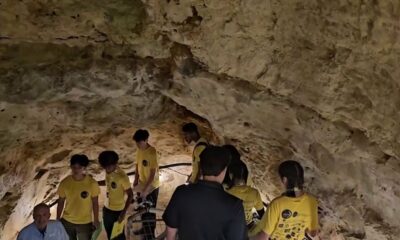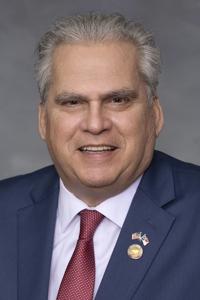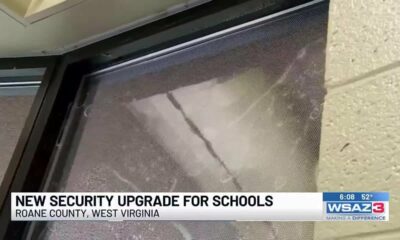Asheville’s Water Resources Department announced Wednesday that an additional 305 lead testing results have come back and again show encouraging results.
The samples were collected between Nov. 18 and Dec. 2, said department spokesperson Clay Chandler at Wednesday’s Tropical Storm Helene briefing. The city began offering lead testing to customers after announcing Nov. 14 that the chemical had been detected in seven schools after the city suspended its lead mitigation treatment program for 19 days in October.
The city previously announced results for another 159 homes, also with encouraging results.
“Out of 464 results that we’ve gotten back so far, 19 had detectable levels of lead on the first draw,” Chandler said, referring to customers taking a sample without first flushing their pipes. “Of those 19, eight were over the (EPA) action limit of .015 parts per billion.”
Out of 464 flush samples, where customers let the water run for 30 seconds, two have had “very slight detectable levels of lead in them.
“The ‘detects’ continue to share a commonality: the customers’ water systems had all been sitting dormant for an extended period of time,” Chandler said.
Chandler said the city’s system is still “ well within” the 90th percentile mark that the EPA and the North Carolina Department of Environmental Quality uses to grade the city on its lead program. That means at least 90 percent of first draw samples must have detectable levels of lead that’s under the action limit level.
“I think right now we’re at about 97.5-ish percent, which is actually better than our regular compliance testing that we did earlier this year,” Chandler said.
The city previously noted that the lead mitigation program was reinstated Oct. 30 and takes 30 to 90 days to reform the protective coating to prevent lead from leaching into pipes in older homes — those built in 1988 or before. Lead was banned in pipes and solder after that.
After the announcement of lead being found in the seven schools, the city has been inundated with requests for test kits — more than 8,000 requests as of Monday, Chandler said. The city has recommended flushing pipes in older homes for at least 30 seconds before using the water for consumption.
Customers who want to pick up or drop off a lead kit can still do so at these locations:
- Asheville City Hall, 70 Court Plaza, from 8 a.m.-5 p.m., Monday through Friday.
- The North Asheville library at 1030 Merrimon Ave., the East Asheville library at 3 Avon Road, and the West Asheville library at 942 Haywood Road, from 10:30 a.m. to 5 p.m. Tuesday through Saturday.
Chandler noted the last day to pick up a kit at the libraries before the holidays is 5 p.m., Thursday, Dec. 19, and the last day to drop them off is 5 p.m. Saturday, Dec. 21. Service at the libraries will resume Jan. 2 and last through Jan. 31.
Chandler also noted that the lab is getting results back quicker than expected, within about two weeks instead of four to six as previously stated.
Turbidity continues to improve at North Fork
Chandler also said turbidity continues to improve at North Fork Reservoir, which provides 80 percent of the city’s drinking water, and an Army Corps of Engineers mobile treatment project is partially operational, with three of 13 units operating. a
“The plan is to scale two units at a time up, until all 13 are operational,” Chandler said. “I believe the latest timeline for that is a week-ish or so to bring those additional units online.”
The Corps contracted the six-month, $39 million project to a private firm. The units can treat higher turbidity water and eventually will take over the bulk of production at North Fork.
For now, North Fork and its existing direct filtration process is providing 16 million gallons a day of treated water, the Corps’ system one million. Total demand now is about 17 million gallons a day.
“The plan is for eventually, once all the units are up and operational, for the Corps of Engineers system to do the vast majority of the heavy lifting, as far as supplying water,” Chandler said.
Right after Helene hit Sept. 27, turbidity at North Fork surged, with the 350-acre lake essentially being turned upside down. Measured in Nephelometric Turbidity Units (NTUs), turbidity initially stood at 79 NTUs.
As of Dec. 18, Chandler said, it stood at 10.2. The city has found that its system can handle higher turbidity than previously thought, but it does require more backwashing and is not a good long-term solution.
Asheville Watchdog is a nonprofit news team producing stories that matter to Asheville and Buncombe County. John Boyle has been covering Asheville and surrounding communities since the 20th century. You can reach him at (828) 337-0941, or via email at jboyle@avlwatchdog.org. The Watchdog’s local reporting during this crisis is made possible by donations from the community. To show your support for this vital public service go to avlwatchdog.org/support-our-publication/.
Related










































